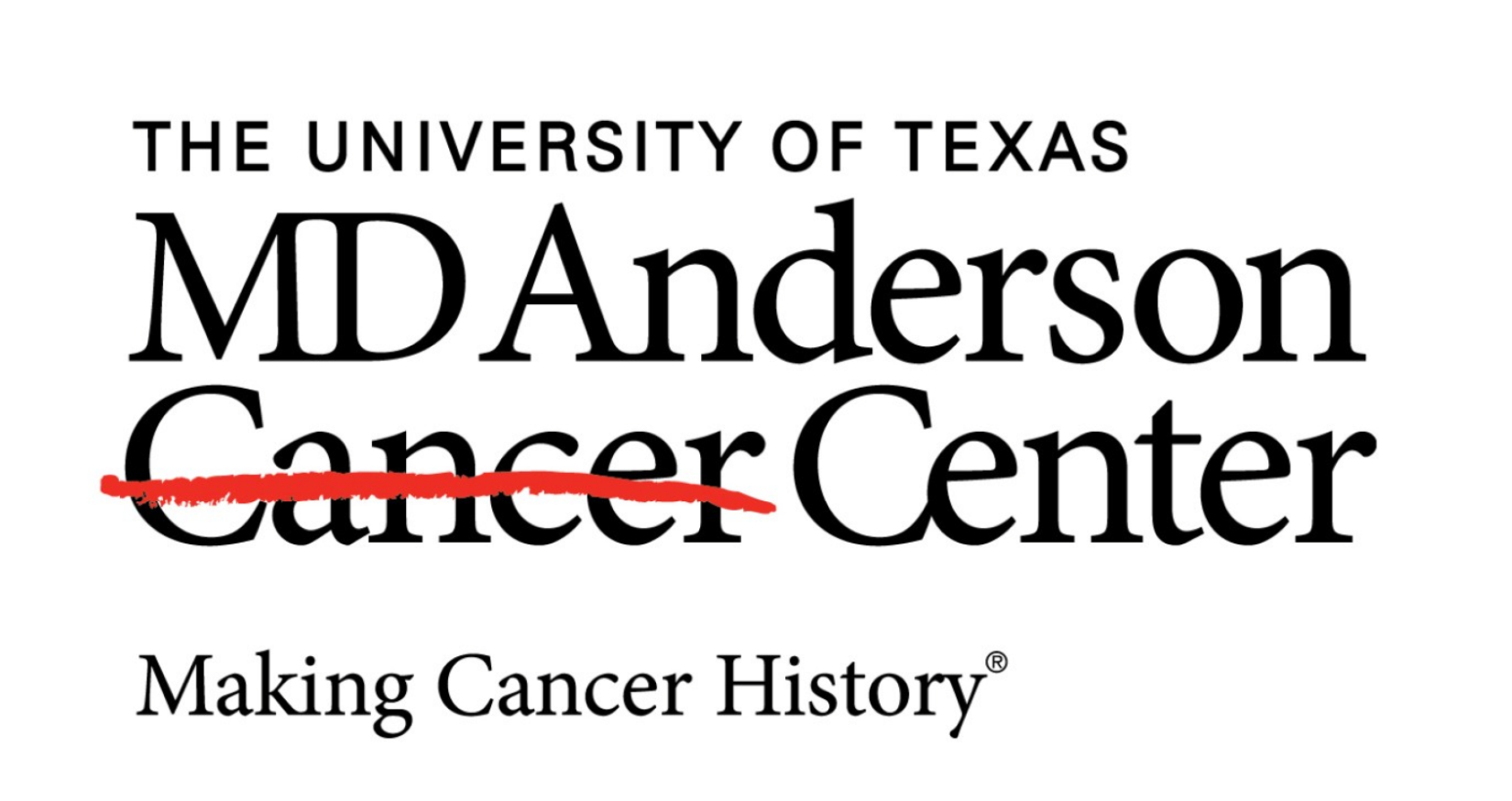Be Part of the Oral Cancer Change
Once again, April has arrived with thoughts of spring, flowers and a new beginnings change perceptions and outlooks. Did you think, hey, it’s also Oral Cancer Awareness month?
Image Credit: © The University of Texas M. D. Anderson Cancer Center

Why the cross through the word cancer? Five years ago, University of Texas, MD Anderson Cancer Center, a global leader in cancer care and research, changed its logo to indicate its intention to strike out cancer. This idea can be seen in ads, PSAs, signage in airports and more. TV and radio ads bleep the word cancer. It’s time for dentistry to bring these type of innovative ideas from other successful cancer awareness groups to make finally start seeing positive changes in the mortality and morbidity of oral cancer.
Breast Cancer Awareness
Huge strides have been seen based on the passion of women through the work of multiple breast cancer groups. In October, Breast Cancer Awareness month, it seems the world gets puked with pink. We see shirts, hats and bracelets. Professional football players wear pink shoes. There are even energy drinks branded pink. The statistics show since 1990, breast cancer mortality has decreased by 34 percent. This decline is due to improved breast cancer treatment and early detection. Awareness didn’t happen with just one group, it took the efforts of many. It’s time for dentistry to take a similar approach with a variety of groups, people and efforts.
Be Part of the Change
Statistics show that 42,000 newly diagnosed with oral cancer since last year’s awareness month. Fully 40 percent of those individuals will be lost to the disease by the year 2020. One person dies from oral cancer every hour, 24-7-365, which adds up to 8,760 people died since our last awareness month. The unfortunate news is we have a seen a change in the rates of oral cancer-a negative change. There has been a dramatic increase being driven by a virus. The HPV 16 virus is replacing tobacco as the primary driver of the disease with healthy, young non-smokers dominating those newly diagnosed.
Never before has opportunistic screening and public awareness been more important. Insanity is to continue to the same things over and over thinking we will get a different outcome. It’s time to learn from others success. The Oral Cancer Foundation asks each of us to be part of the change. The ways you can make a difference are many and varied.
As a Modern Millennial Hygienist, you LOVE the recognition and opportunities provided by OCF. They say it this way:
"One group of individuals is uniquely positioned to be in the forefront of the early discovery paradigm; members of the dental hygiene community. With over 150,000 hygienists working in communities across the U.S., they have the numbers to have an impact. With a hygiene professional seeing approximately 10 patients per day, they see a huge segment of the American population in their practice every year. Most importantly, they spend a large amount of time at each patient visit looking at the soft tissues of the oral cavity, where the early manifestations of oral cancer occur. Lastly, their training gives then an existing skill set to identify suspect tissues, and refer them upwards in the dental community for confirmation (general dentistry), biopsy (oral surgeons and periodontists), histopathology and diagnosis (oral pathologists)."
Ways to Be Part of the Positive Change in Your Practice
Another organization we can learn from is the American Red Cross. They had slogan a few years back, ‘If not you, then who?’ Starting can begin in the practice or practices in which you work. You can call for an oral cancer screening calibration session. First update yourself on current knowledge of oral cancer risks. As mentioned above, there have been changes that all staff members may not know. Discuss and create a risk assessment checklist to be used routinely for all patients. Yes, ALL patients are important. There should be no age limitations. The opportunity for public awareness can start with teaching patients about the risks.
Consistency of screening is the next step. To guide the session, you can use something as simple as using the one of the excellent hands-on demonstration videos on YouTube. In addition to the extraoral/intraoral screening, decide specifically together your protocol for written documentation and more importantly photographic documentation. Extraoral and intraoral screening is still the gold standard and the foundation needed to determine the use of adjunctive technologies. Discuss the adjunctive fluorescent screening technologies. If you have one already, calibrate how each person is using it; if you don’t discuss which system to buy.
Building a Collaborative Health Team
The key to success is the collaborative teams that can built with your practice. With periodontist, oral surgeons and oral pathologist. But don’t stop there, build relationships with medical professionals too. Oncologists, oncology nurses and more. How can you as MMH dental professional work with the oncology team? What is your dry mouth protocol? Do you have one? In upcoming issues we will be talking dry mouth.
Want your thoughts
Modern Millennial Hygienists can positively reshape the statistics by thoughts, choice and action. We would love to hear your thought on the strike out’s here and for you to share what you are doing for Oral Cancer Awareness month and year round.